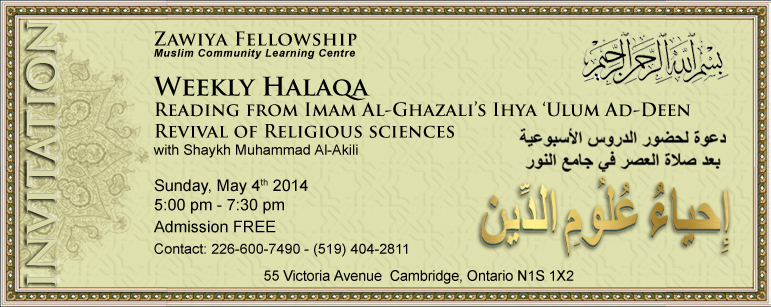
Second Session
Abu Hamid al-Ghazali is one of the great Muslim jurist, theologian and mystics of the Muslim world. He lived in the 12th Century. He was a polymath who wrote on a wide range of topics including jurisprudence, theology, mysticism and philosophy. He is also the author of the famed ihya’ `ulum al-din (Revival of Religious Sciences) a book that combined mysticism with practical everyday life actions by emphasizing the underlying psychology of daily life practices and its ramification on life in this world and the hereafter, (450-505 AH/1058-1111 AD)
The Revival of the Religious Sciences (Iḥyāʾ ʿulūm al-dīn) is widely regarded as the greatest work of Muslim spirituality, and is perhaps the most read work in the Muslim world, after the Quran. The Revival of the Religious Sciences is divided into four parts, each containing ten chapters. Part one deals with knowledge and the requirements of faith—ritual purity, prayer, charity, fasting, pilgrimage, recitation of the Quran, and so forth; part two concentrates on people and society—the manners related to eating, marriage, earning a living, and friendship; parts three and four are dedicated to the inner life of the soul and discuss first the vices that people must overcome in themselves and then the virtues that they must strive to achieve.
Book of the Iḥyāʾ:
First Quarter: Acts of worship (Rubʿ al-ʿibadāt)
Book 1: Book of knowledge, continues
